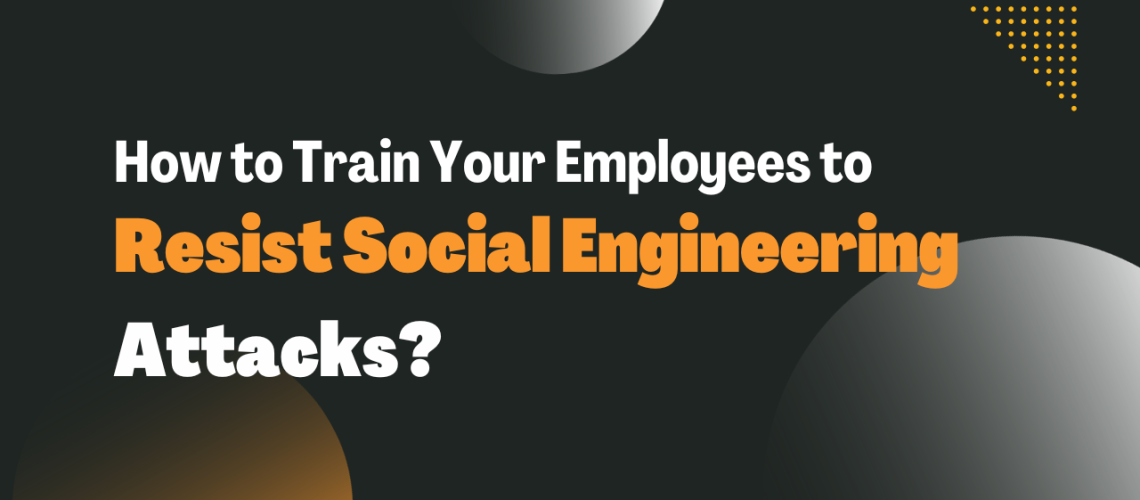In the world of cybersecurity, it’s often said that your employees can be your greatest strength or your greatest vulnerability. While robust technical defenses like firewalls and antivirus software are essential, they’re not enough on their own. Cybercriminals have become increasingly sophisticated, and they’ve learned that targeting the human element within an organization can be a highly effective way to breach its defenses. This tactic is known as social engineering.
Social engineering attacks rely on manipulating people into divulging sensitive information or performing actions that compromise security. They can take many forms, including phishing emails, pretexting phone calls, or even in-person attempts to gather information. The human firewall, as it’s often referred to, is your organization’s last line of defense against these attacks. Training your employees to recognize and resist social engineering attempts is crucial for protecting your business’s data and reputation. In this blog, we’ll explore strategies for building a human firewall within your organization.
Also Read: What Type of Social Engineering Targets Particular Groups of People?
Understanding Social Engineering Attacks
Before we delve into training strategies, let’s briefly explore the most common social engineering tactics that your employees might encounter:
- Phishing: Cybercriminals send deceptive emails that appear to be from a trusted source. These emails often contain malicious links or attachments designed to steal sensitive information.
- Pretexting: Attackers use a fabricated scenario or pretext to manipulate individuals into revealing information, such as financial details or login credentials.
- Baiting: Malicious files or software are offered as enticing bait, often via file-sharing sites, to entice employees to download and install them, unknowingly compromising their systems.
- Tailgating: This tactic involves an attacker physically following an authorized person into a restricted area, leveraging the victim’s trust to gain unauthorized access.
- Quid Pro Quo: Attackers promise a benefit or service in exchange for information or action. For instance, a cybercriminal may offer technical support in exchange for remote access to a user’s computer.
Also Read: What Type of Social Engineering Targets Particular Groups of People?
Training Your Employees to Recognize Social Engineering
Now that we’ve established the various types of social engineering attacks, let’s explore effective strategies for training your employees to recognize and resist them:
Awareness Training:
Start with the basics. Educate your employees about the different forms of social engineering attacks and the potential consequences of falling victim to them. Use real-life examples to make the training more relatable. Encourage employees to report any suspicious activity promptly.
Phishing Simulations:
Conduct regular phishing simulations within your organization. Send mock phishing emails to your employees and monitor their responses. Use these simulations to identify areas where employees may need additional training. Be sure to provide feedback and further education to those who fall for the simulations.
Strong Password Practices:
Emphasize the importance of using strong, unique passwords for different accounts. Encourage the use of password managers and two-factor authentication (2FA) to add an extra layer of security. Weak passwords are often the first line of defense that attackers attempt to exploit.
Verifying Identity:
Teach your employees to verify the identity of anyone requesting sensitive information, especially if the request is unexpected. Encourage them to use contact details from a trusted source to double-check the legitimacy of the request.
Data Classification and Protection:
Ensure that your employees understand the value and sensitivity of different types of data within your organization. Implement data classification policies that clearly define how different data should be handled and protected.
Reporting Procedures:
Make sure your employees know how to report suspicious activity or potential security breaches. Establish a clear and easy-to-follow reporting process so that incidents can be addressed promptly.
Regular Updates and Reminders:
Cybersecurity is an ever-evolving field. Keep your employees informed about the latest social engineering tactics and provide regular updates and reminders about security best practices. This can be done through email newsletters, posters, or regular training sessions.
Role-Based Training:
Tailor your training programs to specific roles within your organization. Employees in different positions may face unique social engineering challenges, so it’s essential to address their specific needs.
Testing and Evaluation:
Continuously assess the effectiveness of your training program. Evaluate your employees’ ability to recognize and resist social engineering attacks, and adjust your training approach accordingly.
Promote a Security Culture:
Building a human firewall is not just about training; it’s also about fostering a culture of security within your organization. Encourage a sense of responsibility for cybersecurity among all employees, from the top down.
Real-World Examples of Social Engineering Attacks
To highlight the importance of this training, let’s look at some real-world examples of social engineering attacks:
The Targeted Phishing Attack: In 2019, a high-profile breach occurred at a major healthcare provider. Cybercriminals targeted an employee with a convincing phishing email that appeared to be from the CEO. The email requested sensitive financial information, which the employee unwittingly provided. The attacker then used this information to initiate a massive wire transfer, resulting in substantial financial losses for the company.
The Friendly IT Technician: An attacker posing as a helpful IT technician gained access to a company’s server room by tailgating an employee. Once inside, the attacker plugged a device into the network, compromising sensitive data.
The Vendor Impersonation: In this scenario, a cybercriminal impersonated a trusted vendor and contacted a company’s procurement department. The impersonator requested a change in payment details for future transactions, leading to payments being redirected to the attacker’s account.
These examples illustrate that even the most sophisticated organizations can fall victim to social engineering attacks. Training employees to recognize and resist these tactics is essential for preventing costly breaches.
Also Read: UAE Enhances Digital Safety Measures, Defends Against Cyber Threats
Building a Resilient Human Firewall
To build a resilient human firewall within your organization, consider the following tips:
Executive Support: Make sure that senior leadership is actively involved in and supportive of your cybersecurity training efforts. When employees see that cybersecurity is a priority for top management, they are more likely to take it seriously.
Consistent Communication: Maintain an ongoing dialogue with your employees about cybersecurity. Regularly communicate the latest threats, best practices, and any changes in policies or procedures.
Reward Vigilance: Implement a rewards system to encourage employees to report suspicious activity or potential threats. Recognize and celebrate those who help protect the organization from social engineering attacks.
Incident Response Plan: Have a well-defined incident response plan in place. Your employees should know what steps to take in the event of a security incident, and this plan should be regularly reviewed and tested.
Adapt and Evolve: Cyber threats are constantly changing. Be prepared to adapt your training programs and security measures in response to new and emerging threats.
Third-Party Vendors: Don’t forget to include third-party vendors in your training efforts. They can also be a source of vulnerabilities, so it’s important that they understand your organization’s security expectations.
Measure and Improve: Regularly assess the effectiveness of your training programs and make improvements as necessary. This might involve refining the content, delivery methods, or frequency of training.
Conclusion
Building a human firewall to resist social engineering attacks is a critical component of your organization’s cybersecurity strategy. By educating your employees, promoting a culture of security, and continuously updating and evolving your training. Still have questions? Contact us at Green Edge Computers to know more.



